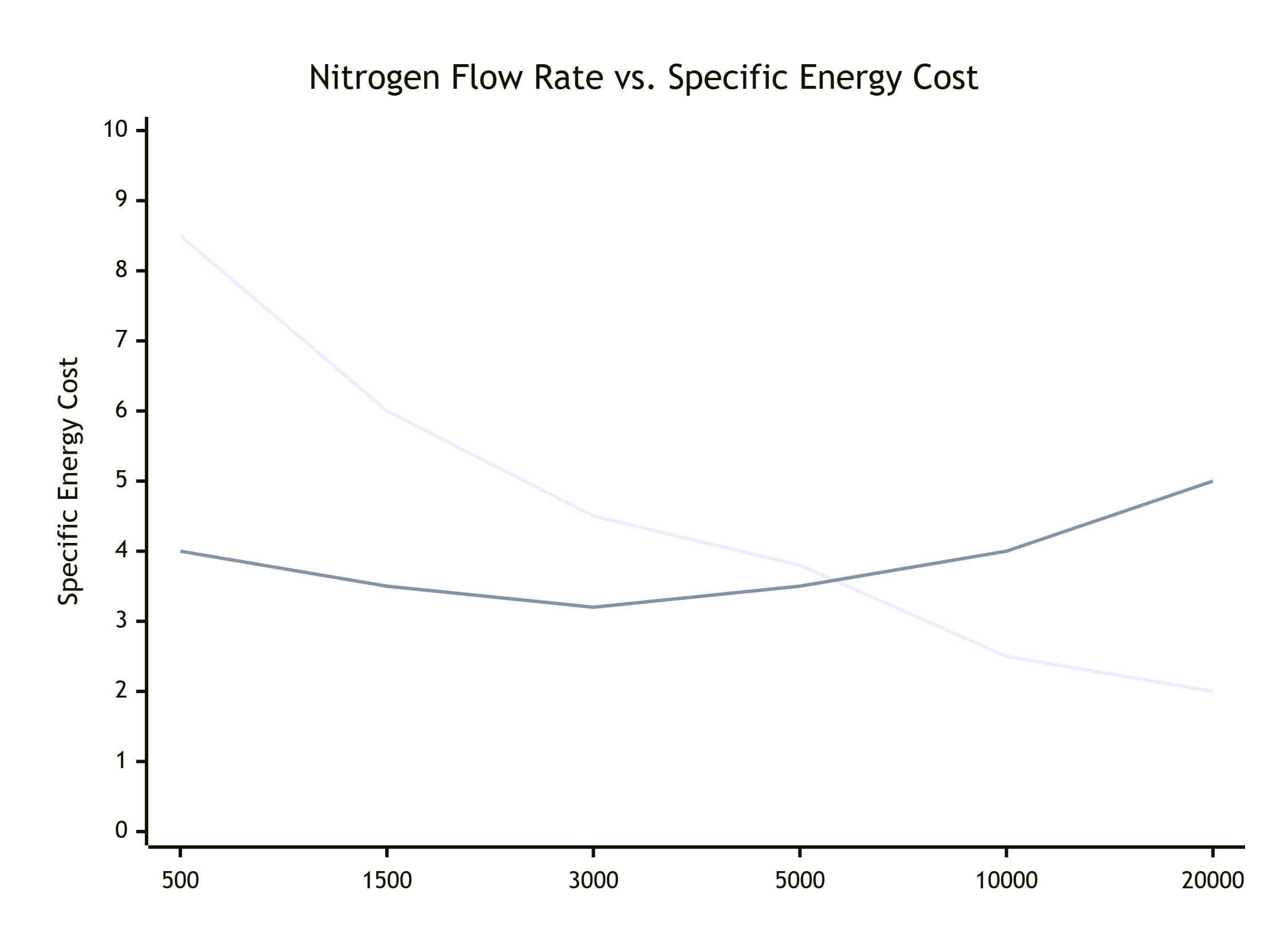Against the backdrop of increasingly severe energy crisis and environmental protection requirements, the cement industry, as one of the important sources of global energy consumption and emissions, urgently needs to find a more efficient and environmentally friendly production method. Oxygen-enriched combustion technology has become a key technology for the transformation and upgrading of the cement industry. Its advantages include significantly improving combustion efficiency, reducing energy consumption, and lowering harmful gas emissions. This article will deeply analyze several common oxygen-enriched combustion methods in the cement industry, and explore their working principles, application advantages, and impacts on cement production efficiency, environmental protection, and cost control.
Common oxygen-enriched combustion methods include local oxygen-enriched combustion, full oxygen combustion, and progressive oxygen-enriched combustion. Different oxygen-enriched combustion methods have their own advantages and scope of application. Cement companies can choose appropriate technical methods according to actual conditions. With the increasing environmental pressure and the development of technology, oxygen-enriched combustion technology will continue to play a key role in the cement industry, promote the sustainable development of the cement industry, and move towards a more efficient and green direction.

What is oxygen-enriched combustion technology?
Oxygen-enriched combustion technology is a technology that optimizes fuel combustion by increasing the oxygen concentration during the combustion process. Compared with the traditional air combustion method, oxygen-enriched combustion can significantly improve combustion efficiency, reduce the emission of harmful gases, and improve the energy utilization rate of the production process. In cement production, companies often use oxygen-enriched combustion technology in kiln combustion systems to enhance thermal efficiency and improve product quality.
Common oxygen-enriched combustion methods in the cement industry
There are several different application methods of oxygen-enriched combustion technology in cement production, including local oxygen-enriched combustion, full oxygen combustion and progressive oxygen-enriched combustion. The application scope and effect of each method are different, and it is suitable for cement production lines of different scales and types.
Local oxygen-enriched combustion
Local oxygen-enriched combustion refers to the introduction of oxygen-enriched gas into the local area of the burner to increase the oxygen concentration in a specific area. By optimizing the oxygen supply locally, the combustion efficiency and heat release rate of the area can be significantly improved.
Advantages
- Strong adaptability: It can be flexibly applied to the existing production line for transformation.
- Low transformation cost: Compared with full oxygen combustion, the transformation cost of local oxygen-enriched combustion is lower.
- Significant energy-saving effect: It can improve the combustion efficiency of the local combustion area and save fuel.
Disadvantages
- Limited effect: can only improve local combustion efficiency, can not improve the combustion effect globally.
- Difficult to control: local oxygen-enriched combustion requires precise control of oxygen supply to prevent local temperature from being too high.
Oxygen combustion
Oxygen combustion is to completely replace the nitrogen in traditional air with pure oxygen or high-concentration oxygen-enriched gas. In this way, the combustion efficiency can be maximized and the emission of pollutants such as nitrogen oxides (NOx) can be reduced.
Advantages
- Efficient combustion: can significantly improve combustion efficiency, release more heat energy, and reduce energy consumption.
- Reduce emissions: reduce the emission of nitrogen oxides and carbon dioxide, and meet increasingly stringent environmental protection standards.
- Improve temperature stability: Oxygen combustion can provide a more stable combustion temperature, which helps to control the temperature in the kiln.
Disadvantages
- Large equipment investment: Oxygen combustion requires additional oxygen supply system and equipment support.
- High operating cost: The additional supply of oxygen increases the production cost.
Progressive oxygen-enriched combustion
Progressive oxygen-enriched combustion technology refers to gradually increasing the oxygen concentration during the combustion process to optimize the combustion process. This method can control the oxygen supply at the beginning of combustion to prevent excessive temperature from damaging the equipment. As the combustion process deepens, the oxygen concentration is gradually increased to ensure the full combustion of the fuel.
Advantages
- High flexibility: The oxygen concentration can be flexibly adjusted according to different production stages.
- Balanced temperature control: Avoids damage to the equipment caused by high temperature at the beginning, while improving the combustion efficiency in the later stage.
- Reduce equipment load: The workload of the equipment is reduced through progressive oxygen supply.
Disadvantages
- High technical requirements: Precision oxygen supply and control system are required.
- Complex implementation: More technical support and equipment investment are required.
The application value of oxygen-enriched combustion in the cement industry
The application of oxygen-enriched combustion technology in cement production can effectively improve production efficiency, reduce energy consumption and meet environmental protection requirements. The following are several major application advantages of oxygen-enriched combustion in the cement industry:
Improve combustion efficiency and reduce production costs
In cement production, kilns are the key link in energy consumption. Oxygen-enriched combustion technology increases the oxygen concentration, allowing the fuel to burn more fully, thereby greatly improving combustion efficiency. Improving combustion efficiency not only reduces fuel consumption but also enhances the thermal efficiency of the kiln, thereby lowering the production cost of unit cement products.
Reduce harmful gas emissions and meet environmental standards
The cement industry is an important source of carbon emissions and nitrogen oxides (NOx) emissions, especially the NOx generated during the combustion process, which has become the focus of global environmental protection. Oxygen-enriched combustion technology reduces the emission of harmful gases by reducing the generation of nitrogen oxides. In addition, improving combustion efficiency can also effectively reduce carbon dioxide (CO2) emissions, which meets international environmental standards.
Improve the quality of cement products and stabilize production
Through the application of oxygen-enriched combustion technology, the temperature distribution in the kiln is more uniform and the combustion process is optimized. This can ensure a more stable calcination process and avoid the problem of unstable cement quality caused by temperature fluctuations. Especially in the production of high-quality cement, stable temperature distribution is crucial.
Extend equipment service life and reduce maintenance costs
Oxygen-enriched combustion makes the combustion process in the kiln more uniform, which can effectively reduce the damage to the equipment caused by temperature fluctuations. The load on the equipment is reduced, thereby extending the service life of the equipment. In addition, uniform combustion can reduce equipment wear and failure rate, thereby reducing the cost of repairing and replacing equipment.
Future prospects of oxygen-enriched combustion technology
With the continuous upgrading of global environmental protection regulations and the increase in energy costs, the application prospects of oxygen-enriched combustion technology in the cement industry are broad. In the future, as technology continues to develop and optimize, oxygen-enriched combustion will play a more important role. It will improve combustion efficiency, reduce carbon emissions, enhance product quality, and lower production costs. Cement plants will increasingly adopt oxygen-enriched combustion technology to improve overall production levels and cope with increasingly stringent environmental protection standards.
Conclusion
Oxygen-enriched combustion technology enables the cement industry to achieve breakthroughs in energy utilization efficiency. It also helps companies comply with environmental protection regulations. Additionally, it enhances their brand image by reducing pollutant emissions. With the increasing global attention to green production models, oxygen-enriched combustion will play a more important role in the cement industry. If you want to know more about oxygen production, please pay attention to the MINNUO official website. We not only provide high-quality products, but also provide comprehensive industry information analysis.






 sales2:+86 17506119168
sales2:+86 17506119168

